Top 10 Best Types of Martial Arts
What are the best types of martial arts? Now, that's a bit of a loaded question. 'Best' is highly subjective, and it really depends on what you're looking for. Are you seeking a martial art for self-defense, fitness, competition, spiritual development, or maybe a combination of these? Each martial art has its strengths and weaknesses, and what's 'best' will vary greatly depending on individual needs and interests.So, we thought the best way to answer this question was to put it to the people! We've opened up the voting to the masses, asking people to weigh in on which martial arts they think are the best. But this isn't just a popularity contest. We're talking about the martial arts that have proven their worth over centuries, sometimes millennia, of practice. We're considering their effectiveness, their depth, their cultural significance, and the passion of their practitioners.
Vote for the martial arts that you think deserve to sit atop the martial arts mountain. Maybe it's the precision and discipline of Karate, the fluid movements of Tai Chi, or the practical self-defense techniques of Krav Maga. Or perhaps it's the competitive spirit of Judo, the holistic approach of Aikido, or the raw power of Muay Thai. Whatever your choice, it's time to make your voice heard.
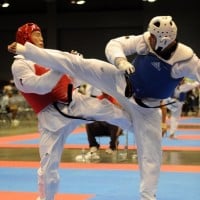 Originating in Korea, Tae Kwon Do is a form of martial arts that emphasizes high, fast kicks, jumping and spinning kicks, and fast kicking techniques. The discipline combines combat and self-defense techniques but also promotes a philosophy of self-improvement, perseverance, and responsibility. As a modern martial art, it is popular worldwide and is even an Olympic sport.
Originating in Korea, Tae Kwon Do is a form of martial arts that emphasizes high, fast kicks, jumping and spinning kicks, and fast kicking techniques. The discipline combines combat and self-defense techniques but also promotes a philosophy of self-improvement, perseverance, and responsibility. As a modern martial art, it is popular worldwide and is even an Olympic sport. Grand Master Kim's Taekwondo has been one of the best choices my family and I have made. My three girls and I have been attending classes for about two years now. Since starting, I have lost over 100 lbs, going from a size 20 to a size 4/6! My girls and I are learning the five tenets of Taekwondo - Courtesy, Integrity, Perseverance, Self-Control, and Indomitable Spirit - and learning how to apply them to our lives. I love the fact that we have something positive in common to work on and learn together.
Even if you take your time to get your belt rank up, in the words of Master Grimm, "Don't give up or quit! Quitters stay at home!" For someone who has never done anything close to this before, Grand Master Kim, Sr. Master Flint, Master Grimm, and the rest are all great instructors. We will be a part of our dojang for our Black Belts and beyond!
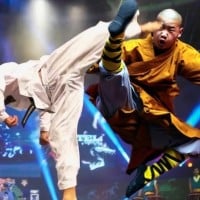 Kung Fu, also known as Chinese martial arts, encompasses a wide range of practices that have developed over the centuries in China. These fighting styles can be classified by common traits, such as physical exercises involving animal mimicry or training methods inspired by Chinese philosophies, religions, and legends. Kung Fu styles can incorporate kicks, strikes, throws, joint locks, and weapons training.
Kung Fu, also known as Chinese martial arts, encompasses a wide range of practices that have developed over the centuries in China. These fighting styles can be classified by common traits, such as physical exercises involving animal mimicry or training methods inspired by Chinese philosophies, religions, and legends. Kung Fu styles can incorporate kicks, strikes, throws, joint locks, and weapons training. In all forms of the traditional sense, martial arts is an art. Because of this, it is highly dependent on the person executing the art to be able to adapt to all situations, which makes for the best use of the art. Rather than emphasizing one type of fighting, such as stance, wrestling, striking, kicking, weapons, grabbing, offensive, or defensive, Kung Fu has a great adaptation and usage of all of these. Wing Chun/Tsun, of all the many Chinese martial arts, places emphasis on the technique and attacking the attack, as opposed to the majority which defend and counter.
The base concepts of all, however, take time. There is no wrong or right, and no better or worse style of martial art, but only what works best for you. Just as every martial art is different, every person is different, and thus every teacher is also different. Keep that in mind if you decide to study a martial art, and adapt it to make it your own.
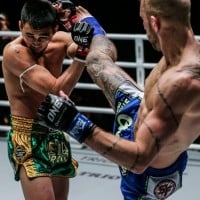 Muay Thai is a martial art and combat sport originating from Thailand. It is also known as "the art of eight limbs" because it combines the use of fists, elbows, knees, and shins. Muay Thai teaches participants to use their body as a weapon for self-defense, and it is known for its rigorous training and physical conditioning.
Muay Thai is a martial art and combat sport originating from Thailand. It is also known as "the art of eight limbs" because it combines the use of fists, elbows, knees, and shins. Muay Thai teaches participants to use their body as a weapon for self-defense, and it is known for its rigorous training and physical conditioning. This is the art of eight limbs, also considered to be one of the most brutal martial arts in the world. Muay Thai even beats Karate, Taekwondo, and Kickboxing. I just started doing Muay Thai, and it has made me stronger, faster, more agile, and more skilled in punching and kicking. There is no martial art like Muay Thai. It boosted my confidence and ego. Fast and devastating kicks and blows to the head, face, body, and legs.
Personally, I think Muay Thai is number one as it has the best all-around offense, with punches, kicks, elbows, knees, and clinching. In my experience, Kung Fu only seems to work against other forms of Kung Fu. Put a Kung Fu fighter against somebody with a different martial arts background, and they tend to perform very badly. It may look great in films, but the tip-tap kicks and the tap-away blocks don't work in real life. This is why it looks great in demonstrations but isn't actually practical in the real world. The same applies to Karate, which is good against itself but not very effective against Muay Thai. Taekwondo is probably the second-best, and I still rate it highly, but Muay Thai is definitely the most dominant.
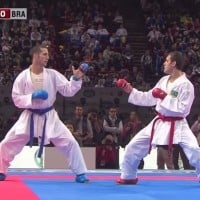 Karate is a martial art developed in the Ryukyu Kingdom, which is now part of modern-day Japan. It emphasizes striking techniques, such as punching, kicking, knee strikes, and open-handed techniques. Some styles also incorporate grappling, locks, restraints, throws, and vital point strikes. Karate promotes discipline, self-control, and a strong spirit.
Karate is a martial art developed in the Ryukyu Kingdom, which is now part of modern-day Japan. It emphasizes striking techniques, such as punching, kicking, knee strikes, and open-handed techniques. Some styles also incorporate grappling, locks, restraints, throws, and vital point strikes. Karate promotes discipline, self-control, and a strong spirit. Karate can't be seen in sport as being effective because the only techniques one can use legally in sport fighting are the ones that most resemble kickboxing. So, you very seldom see real Karate techniques in sport fighting, leading people to get the wrong impression and not take it seriously! Karate offers everything Muay Thai has to offer (in a slightly different way) and more.
So many techniques, when practiced with all effort, can end a confrontation and fight fast and in a devastating manner if need be. The best part of Karate is that it's a way of life and can be practiced and studied for an entire lifetime!
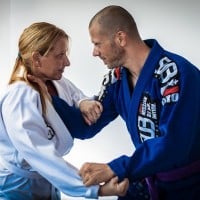 Brazilian Jiu-Jitsu (BJJ) is a martial art that focuses on grappling and ground fighting. Originated in Brazil and based on Kodokan judo, it promotes the concept that a smaller, weaker person can successfully defend against a bigger, stronger assailant using leverage and proper technique - most notably by applying joint locks and chokeholds to defeat the opponent.
Brazilian Jiu-Jitsu (BJJ) is a martial art that focuses on grappling and ground fighting. Originated in Brazil and based on Kodokan judo, it promotes the concept that a smaller, weaker person can successfully defend against a bigger, stronger assailant using leverage and proper technique - most notably by applying joint locks and chokeholds to defeat the opponent. Brazilian Jiu-Jitsu (BJJ) has been shown repeatedly to be the superior martial art through rigorous testing, such as the Gracie challenge videos. The strength of BJJ is that it capitalizes on the weaknesses of other martial arts. For example, the majority of martial arts completely neglect the ground game. Thus, BJJ perfects takedowns and then a very detailed ground game for control and inflicting extreme damage.
Another reason that BJJ is a better martial art is that it can be trained full contact, with 100% resistance, and as realistically as possible. A measured approach is only required right before a submission is applied.
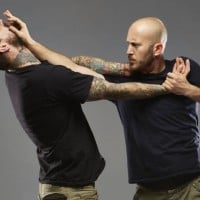 Krav Maga is a martial art and self-defense system developed for the military in Israel. It focuses on real-world situations and practical techniques, incorporating elements from other fighting styles such as boxing, wrestling, judo, and aikido. Krav Maga emphasizes threat neutralization, simultaneous defensive and offensive maneuvers, and aggression.
Krav Maga is a martial art and self-defense system developed for the military in Israel. It focuses on real-world situations and practical techniques, incorporating elements from other fighting styles such as boxing, wrestling, judo, and aikido. Krav Maga emphasizes threat neutralization, simultaneous defensive and offensive maneuvers, and aggression. Krav Maga consists mostly of real-life applications, including defense against a knife, gun, group, and just plain experienced attacker. It focuses on purely realistic self-defense techniques. Most other martial arts are mainly used as sports. Wrestling, Brazilian Jiu-Jitsu, and many others teach unrealistic methods of self-defense. Why would you want to bring an attacker to the ground with you when you are more likely to be stabbed or stomped on by his buddy? Krav Maga teaches one to eliminate the threat in the most efficient and safe way possible. In my opinion, if I were to be attacked, I would want to get as far away from the threat as possible, even if the methods included eliminating the threat in what other arts would call dirty moves. No other martial art teaches self-defense as realistically as Krav Maga.
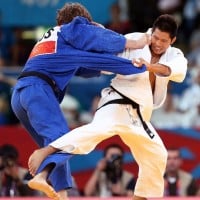 Judo is a modern martial art, combat, and Olympic sport created in Japan in 1882 by Jigoro Kano. It's characterized by its focus on throws and grappling techniques, including pins and locks. Judo emphasizes efficiency, flexibility, and the principle of using one's opponent's strength against them. It also promotes physical, intellectual, and moral education.
Judo is a modern martial art, combat, and Olympic sport created in Japan in 1882 by Jigoro Kano. It's characterized by its focus on throws and grappling techniques, including pins and locks. Judo emphasizes efficiency, flexibility, and the principle of using one's opponent's strength against them. It also promotes physical, intellectual, and moral education. As a Judoka with multiple martial-artist friends, I am obviously biased towards Judo. Despite this, I recognize its flaws - namely its uselessness until you close the gap, by which point the strike-oriented arts will have already pulled a few punches. However, at this point, judo gains complete superiority. The only way I have ever seen a judoka not beat a karateka is when they simply run away until the clock runs out. If the fight ends up on the ground, all except Brazilian Jiu-Jitsu lose, for obvious reasons.
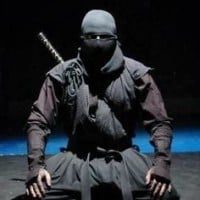 Ninjutsu is the martial art practiced by the historical ninja of Japan. It involves espionage, sabotage, guerrilla warfare, and assassinations. As a martial art, it includes the training of both unarmed and armed combat, stealth, disguise, escape, and evasion techniques. It also incorporates the use of various tools and weapons traditionally associated with the ninja.
Ninjutsu is the martial art practiced by the historical ninja of Japan. It involves espionage, sabotage, guerrilla warfare, and assassinations. As a martial art, it includes the training of both unarmed and armed combat, stealth, disguise, escape, and evasion techniques. It also incorporates the use of various tools and weapons traditionally associated with the ninja. The only reason I voted for Ninjutsu is that I studied it and I can vouch for its efficacy. However, I also want to say that these polls are a bunch of bull. There is no way to prove that one martial art is better than another. It all depends on the practitioner.
While martial arts featuring an entire arsenal of techniques are really tempting (there are 18 disciplines of ninjutsu, ranging from empty-handed and armed combat to manufacturing bombs and poisons), simple and empty-minded fist fighting can prove just as efficient.
Also, ninjutsu and aikido are very much alike in techniques (not ideology). I don't understand why they're so far apart in this poll.
 Boxing is a combat sport and martial art in which two people, typically wearing protective gloves, throw punches at each other for a predetermined amount of time in a boxing ring. It emphasizes speed, strength, reflexes, endurance, and strategic skills. Boxing is known for its rigorous training regime and has been an Olympic sport since 1904.
Boxing is a combat sport and martial art in which two people, typically wearing protective gloves, throw punches at each other for a predetermined amount of time in a boxing ring. It emphasizes speed, strength, reflexes, endurance, and strategic skills. Boxing is known for its rigorous training regime and has been an Olympic sport since 1904. I'm an amateur boxer with a few months of experience, and I'll show you how good it really is. Boxing is great if you want to improve your striking. It helps with punching power, speed, agility, skill, endurance, and toughness.
Boxing also aids in mental preparation, teaching you how to quickly overcome fear before fights and how to resist intimidation. It's called the "sweet science" for a reason. You learn punching techniques and analyze the movement and style of your opponent to find ways to counter them or finish them off quickly.
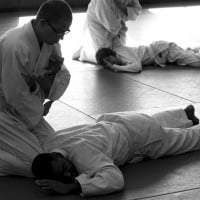 Aikido is a modern Japanese martial art that focuses on harmony and the blending of movements with those of the opponent. Techniques often involve joint locks and throws derived from jujitsu and kenjutsu. It's a defensive martial art that aims to control an attack through body movements to unbalance the opponent, employing minimal harm in neutralizing conflict.
Aikido is a modern Japanese martial art that focuses on harmony and the blending of movements with those of the opponent. Techniques often involve joint locks and throws derived from jujitsu and kenjutsu. It's a defensive martial art that aims to control an attack through body movements to unbalance the opponent, employing minimal harm in neutralizing conflict. This art can be practiced at any time regardless of age or gender. Surprisingly, it takes longer to master but is definitely a good foundation to start your martial arts training. It's not just about the development of timing and fundamentals of proper falling, but understanding techniques through training with weapons. The vast majority of practitioners welcome each other worldwide on the open mat. Clearly, Aikido is a very beautiful art to enjoy in one's daily practice.
Aikido is a martial art that's tailored to respond to any type of attack. There's that saying, the ultimate offense is the ultimate defense, and Aikido is living proof of that. I even remember watching that UFC or that Japanese fighting championship (I don't remember which one it was). The Aikido dude got disqualified because he didn't beat up anyone. His opponents quit because they could not defeat him, which was quite amusing.
Sambo is a great form of martial art. It uses throws, traps, and locks to knock down your opponent. There are different types: sport, freestyle, and combat. Combat is more useful because it adds in kicks and punches, as well as the techniques I listed above.
Sambo is very useful for self-defense. It's way more useful than Taekwondo.
Wing Chun may look like flashy Kung Fu, but it is highly effective in real-life fights. When stuck in a fight, grappling, pushing, and trying to punch at close range can result in losing balance and potentially going to the ground. Wing Chun offers solutions for these problems in real-life situations.
The greatest martial artist in the ENTIRE world was Yip Man, and he practiced Wing Chun. He trained Bruce Lee, and he is still considered better than him. If you are a master in Wing Chun, you could even beat a Taekwondo or Boxing Master.
Although no martial art can definitively beat another, as it's all about the practitioner, I'm going to go with kickboxing. I've been a kickboxer for years and have tried other martial arts like Taekwondo, Aikido, Kung Fu, and MMA. I find that kickboxing is the real deal, both competition-wise and in self-defense situations. It focuses on effective striking without meditating or ground grappling.
Kickboxing, the greatest martial art in my opinion, and what I want to do. You might just see me on the news one day.
Kickboxing should be higher on the list. I practice TKD kickboxing and I am a second-degree black belt who has earned a few state titles. I've learned a lot since I first started and I'm happy I did.
 Wrestling is a combat sport involving grappling techniques such as clinch fighting, throws and takedowns, joint locks, pins, and other grappling holds. There are a wide range of styles with varying rules, both traditional and modern, and it's a common base discipline in many mixed martial arts systems. Wrestling has been an Olympic sport since ancient times.
Wrestling is a combat sport involving grappling techniques such as clinch fighting, throws and takedowns, joint locks, pins, and other grappling holds. There are a wide range of styles with varying rules, both traditional and modern, and it's a common base discipline in many mixed martial arts systems. Wrestling has been an Olympic sport since ancient times. Wrestling is one of the best stamina training martial arts. You can see when watching things like Bellator Cage, and the PFL, UFC. Things like this, every great fighter is a wrestler, examples being Daniel Cormier, Bo Nickal, Khabib, Islam. And etc.
Everyone can throw a punch or a kick, but not everyone can grapple or lock properly. In MMA, the majority of the movements are based on wrestling, which is a form of dominance.
By the way, the list and the voters are too influenced by movie portrayals. Most of the list is a joke, irrelevant, and outdated.
It's better than karate. I think karate is not as good.
Batman used it in two movies. However, the Pensador stance fails.
Pankration is the mother of all martial arts, the oldest and most violent.
Karate, Judo, Jujitsu, Kenpo, Boxing, and Chinese Boxing. Formed in 1947, it's the first traditional mixed martial art. It has been used to train military and federal contractors, law enforcement, etc. This, along with Krav Maga, is what makes these guys such badasses... Yet so low-key in public.
A combination of karate, jujitsu, Kenpo, and Chinese boxing. Very effective on the street. Also known for being a dirty and sadistic fighting style.
Silat is unpredictable and unorthodox, attacking from any direction and angle. It emphasizes speed, deception, relentless attack, and includes a grappling style. It's very difficult to fight against, especially if you haven't seen it before.
Take boxing, for example. I've known about it and seen it so many times, whether sparring or watching TV. So, I already know what to expect against a boxer: his attacking pattern and strategy. But against Silat, it's a different challenge. It's like a free-flowing, patternless martial art. It's difficult to counter and predict. That's what my experience was when fighting against a Silat fighter a couple of years back.
So yes, it deserves a spot in the top ten.
I've been a practitioner of Eskrima since I had it as part of my subject in college. At first, we might have thought it was just a simple stick fight, but as you delve deeper, it involves different useful tactics that can greatly save your life in a common street fight, with or without a weapon. It's a complete package. You can practice it empty-handed or use just anything in your surroundings for added reach advantage, even a barbecue stick. It includes proper stances, blocks, evasions, disarming, pin-downs, etc., with all kinds of weapons, from short swords to long swords, daggers to spears. Perhaps if arrows were still mainstream, they might have tactics to block those like the Spartans.
Kon'ichiwa, I am a practitioner of Japanese Jujutsu and want to express my views as a martial artist. Jeet Kune Do fighters are, like Bruce Lee said, to be like water. Actualize yourself as a fighter and do not pick and choose which style you like. To understand fighting, you need not become a product of patterns and fixed thinking. Throw away prejudice, etc.
Things like Boxing and Judo (no offense to those people) are styles which could cloud the truth of combat and hide the expression of human emotion through patterns. You should aim to utilize all types of combat skill and self-awareness. To use only punches or only to grapple somebody is ineffective against a group if you are no master.
I'm a martial artist myself, but I find that some locks and other techniques may not be useful in quick reaction situations. However, do not hate technique. Seek to understand every technique forward and backward, to understand what is useful and what is uniquely your own philosophy. Any martial artist from any style can become the best. You just have to be open-minded about the fight.
I give my vote to JKD because Bruce Lee, the founder of which, was the best fighter. No style is the best. It would all depend on the fighters. The knowledge of two different fighters reflects on the fight and their ability to actualize themselves as fighters, like Bruce Lee was clearly very good at, not because he belonged to a style but to knowledge of the fight, whether the person is very strong or tall, etc.
Ultimately, martial arts are self-defense, and you should strive to express your feelings through martial arts. Lastly, I want everyone to know: respect all the styles and schools, and so should everyone else. All styles are good, and perhaps some are more effective at an earlier stage of training. I hope you agree with me as a human being and see how I am attempting to enlighten.
My children have just started this class, and they love it.
Tang Soo Do is the best! I also practice Tang Soo Do.
Although Taekwondo is a good martial art, it's kind of limited compared to Hapkido. Also, Taekwondo is considered more of a Korean sport rather than a martial art. It's still good, but Hapkido offers more variety.
I practiced Hapkido for 8 years and it taught me enough to accidentally almost hurt two of my friends pretty badly while we were roughhousing... when I was 6. Hapkido has taught me a lot.
Hapkido is the only martial art that operates in ALL four self-defense ranges, beating ALL the martial arts listed above.
It is an Indian martial art, one of the oldest in the world. Undoubtedly, it is the best because:
1. Many ancient battles were won using this martial art.
2. It is not only about fighting. It is like a flying fight.
3. Various types of weapons like axes, bows and arrows, swords, shields, and sticks are used in this style. Even one can defeat an armed opponent only with a towel.
4. They chant mantras to increase their spiritual power.
5. Their combat techniques deal with flexible movements, jumps, and pressure point strikes. Without a doubt, they have the highest level of physical fitness, and yoga is a part of their regular routine.
6. There is a high level of medical knowledge in Ayurveda, so their treatments work miracles.
7. Moreover, it teaches us to always respect your opponent, even if he is lying on the ground.
For all these reasons, it is clear as daylight that Kalaripayattu is the greatest martial art in the world.
I haven't learned this art, but I know only one technique which I used in my life. I was going to be pushed violently to my chest, but I reversed it and pushed my aggressor back, avoiding an ugly fight thanks to Tai Chi!
The basic idea is using the opponent's strength to defeat them. "Nothing is softer than water, but nothing is stronger than water, all depending on the wind." And Tai Chi is good for your health.